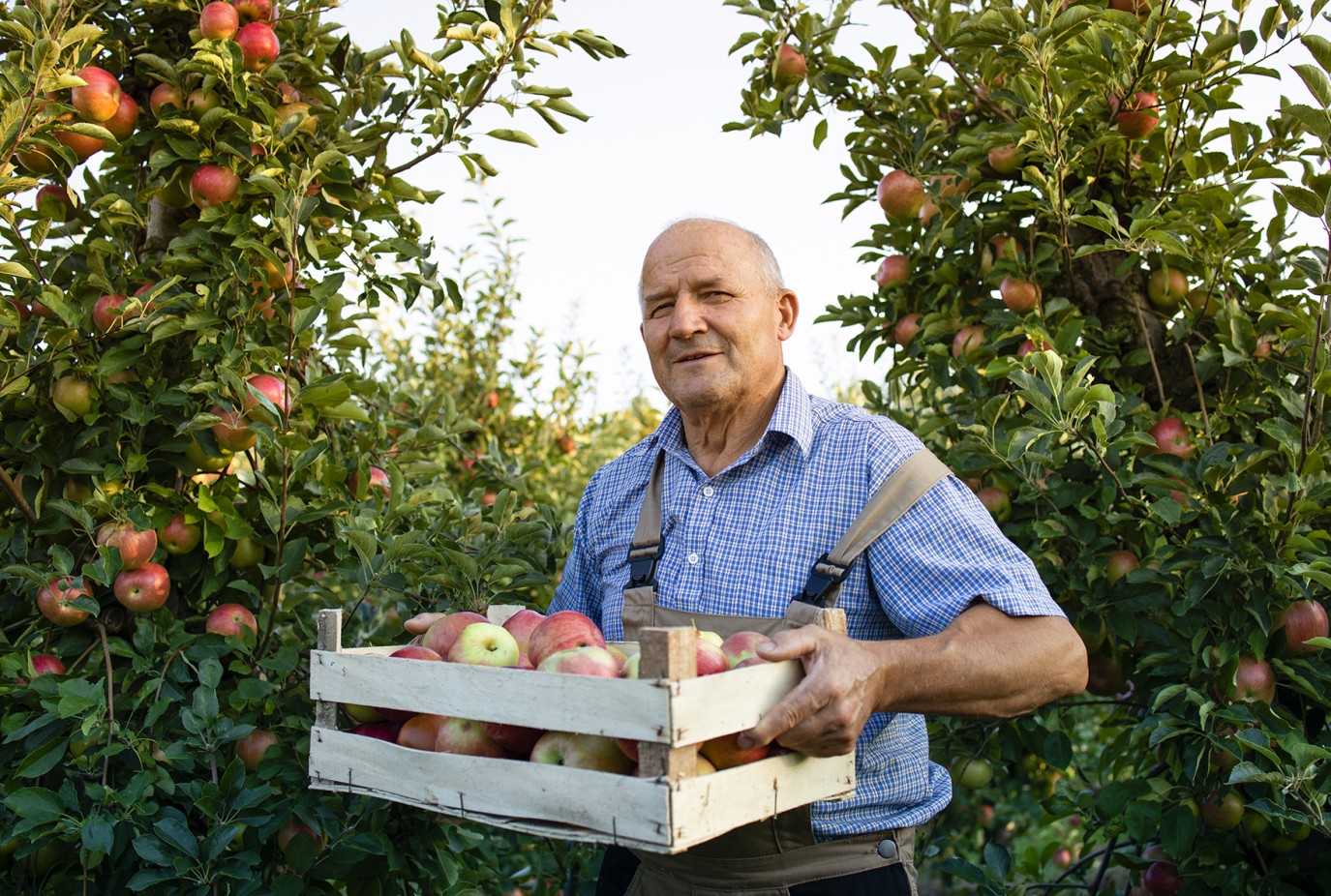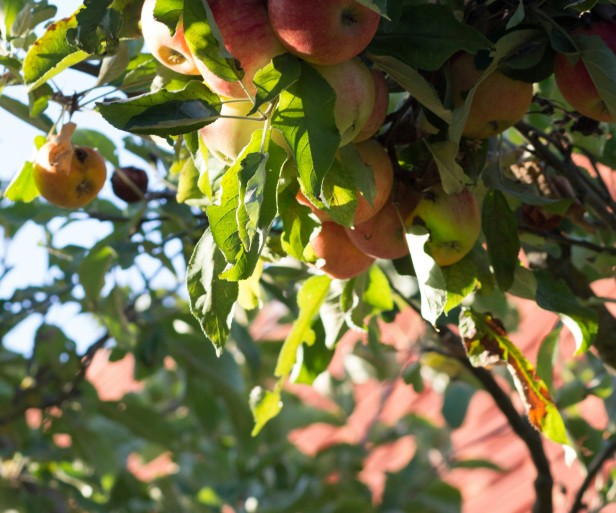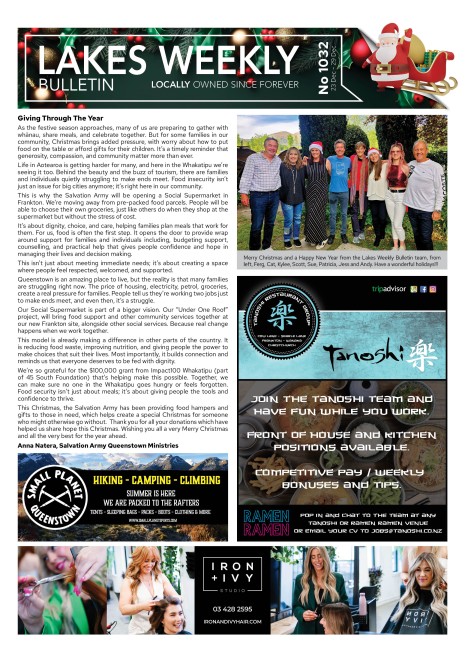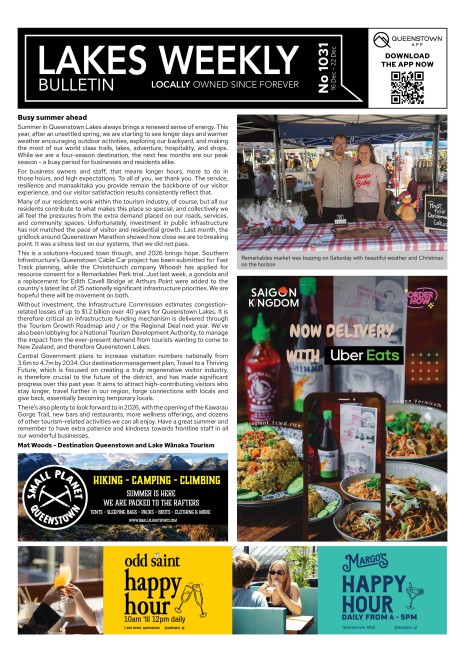June - Time to plant a fruit tree

It is definitely winter and I’m a fan of winter, yet as a gardener I’m already counting down the weeks to spring, it can’t come quick enough for me and my aching bones.
Winter is a great time to plant a fruit tree. One fruit tree can be feeding the family in 3 years’ time and is also a gift to future generations.
Most fruit trees are unloved - chucked in the ground, unpruned, no fertiliser, no mulch and no support plants. You have only got to drive around the district in autumn to see all the wild apple trees laden with apples.
Let’s create more resilience in our home gardens and our community spaces by planting more fruit trees.
If you were to plant just one tree this week, I’d recommend an apple tree, and make it a ‘Monty’s Surprise’. This apple was discovered in NZ a few decades ago on a roadside, producing lots of apples and with no disease. Research has shown the Monty Surprise having high levels of procyanidins as well as quercetin flavonoid compounds. These are effective at inhibiting cancer cells in the body. The Monty Surprise is very hardy and disease resistance, making it ideal for backyard growing.
So now you’ve bought the apple tree, let’s plant it.
- Check the rootstock. Apples come with different rootstocks. The rootstock determines the final size of the apple tree. For smaller gardens, look at an apple on a M9 or M27 rootstock producing a semi dwarf sized tree. For medium sized trees M106 will give you a 3-5m high tree. M106 is also commonly used for espaliering [a tree that can be trained to grow along a wall].
- Choose a very sunny spot. Consider putting it near a fence or look at an espaliering on a north facing fence if you are short on space or you live in a cooler spot. The reflection of heat and light by the fence encourages fruiting and ripening.
- You can begin planting fruit trees from late April through to early spring.
- Dig a big hole. Bigger than the tree planter bag. The bigger the hole you dig the more soil you loosen up the quicker your fruit tree can build that root system.
- In the hole mix through the planting soil with a few quality shovelfuls of compost and 1 to 2 litres of biochar. You could also throw in a few handfuls of slow release sheep pellets. The bigger the hole the bigger the quantity of compost and biochar. Studies have shown fruit trees will grow bigger, have higher yields, when biochar is used.
- Some fruit trees have a white or red dot, indicating where to plant the tree relative to the sun. Put the exposed ‘graft’ section of the tree facing south. This will protect the tree from freeze thaw and sunburn.
- Make sure the finished planting level is at the same level as the tree arrived in the pot. You’re not wanting to plant the tree deeper, as over time the tree collar will rot and kill the tree.
- The soil level of the finished planted tree hole should sit 5 to 10 cm below the regular soil level with at least a square metre of space. This allows you to add compost and a woodchip or straw mulch to the surface. The mulch is less likely to get blown, scratched, or flooded away.
- Next rabbit proof if needed. This is important as rabbits will ring bark(chew all the bark around the base of a tree) in an evening.
- Stake the tree if you are in a high wind zone. One stake placed in the direction of the prevailing wind is enough. This allows some movement and encourage strong roots.
- To aid any transplanting shock give the tree a feed with a little liquid seaweed.
- Then decide what kind of shape you want for the tree. Apples and pears are better as a single standard shape which requires less pruning long term.
Don’t let any fruit grow on the tree for the next 3 years, to encourage rapid growth through the juvenile period. Fruit takes away from this.
Through spring and summer give the tree a liquid seaweed feed drench and foliar (on its leaves) once a month and a good deep water once a week in drier periods. Keep the mulch topped up. Fruit trees will grow very slowly if they must compete for nutrients and rainwater.
So, get planting that fruit tree today.
Happy Gardening.
Dr Compost aka Ben Elms is a permaculture and gardening expert who’s been operating in the unusual Central Otago climate for over 20 years. Funded by QLDC and delivered by Wanaka Wastebusters, the Dr Compost project aims to reduce organic waste going to landfill.
Got a question? Check out @drcompost on Facebook or benelms.com







